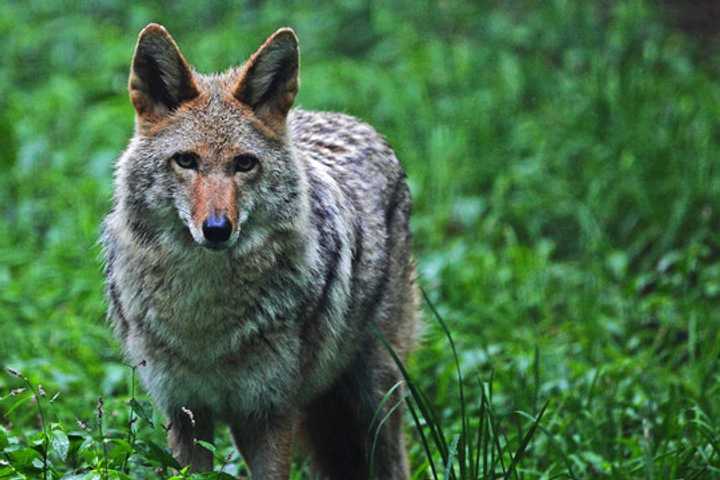Two sightings of coyotes - estimated at approximately 40 pounds each - were reported in New Rochelle in recent days.
The first sighting was reported on Thursday, Oct. 24 at approximately 7:15 a.m., the second on Sunday, Oct. 27, both in the Beechmont Woods neighborhood. The coyotes didn’t make contact with any humans, but were seen prowling about the area.
According to the Parks Department, coyotes are canines, “which means that they are members of the same genus as wolves and domesticated dogs. In general, coyotes appear ‘sleeker’ than domesticated dogs, with a flatter forehead and a more pointed snout.
“Coyotes appear to have longer legs than domesticated dogs, while dogs appear to have deeper chests. Also, they have very different tracks. Coyote tracks are more elongated, and they place their front and back paws in alignment when they walk.”
"Coyotes are an integral part of our natural ecosystem and provide many benefits to New Yorkers, but can cause conflicts if they become accustomed to human interaction and food sources," New York State DEC Commissioner Basil Seggos stated. "We strongly encourage all New Yorkers to do their part and follow our common sense tips to ensure coyotes remain wary of people and minimize the chance of conflicts.”
The DEC has issued a series of tips to reduce the risk of a potential coyote incident:
- Do not feed coyotes and discourage others from doing so.
- Unintentional food sources attract coyotes and other wildlife and increase risks to people and pets.
- Do not feed pets outside.
- Make any garbage inaccessible to coyotes and other animals.
- Fence or enclose compost piles so they are not accessible to coyotes.
- Eliminate the availability of birdseed. Concentrations of birds and rodents that come to feeders can attract coyotes. If you see a coyote near your bird feeder, clean up waste seed and spillage to remove the attractant.
- Do not allow coyotes to approach people or pets.
- Teach children to appreciate coyotes from a distance.
- If you see a coyote, be aggressive in your behavior - stand tall and hold arms out to look large. If a coyote lingers for too long, then make loud noises, wave your arms, and throw sticks and stones.
- Do not allow pets to run free. Supervise all outdoor pets to keep them safe from coyotes and other wildlife, especially at sunset and at night. Small dogs and cats are especially vulnerable to coyotes.
- Fenced yards may deter coyotes. The fence should be tight to the ground, preferably extending six inches below ground level and taller than four feet.
- Remove brush and tall grass from around your home to reduce protective cover for coyotes. Coyotes are typically secretive and like areas where they can hide.
- Contact your local police department and DEC regional office for assistance if you notice that coyotes are exhibiting "bold" behaviors and have little or no fear of people. Seeing a coyote occasionally throughout the year is not evidence of bold behavior.
- Ask your neighbors to follow these same steps
"The Eastern coyote can be found in rural farmlands and forests, and occasionally in populated suburban and urban areas. In most cases, coyotes avoid people as much as possible. In fact, coyotes can provide many exciting opportunities. However, if coyotes learn to associate people with food - such as, garbage or pet food - they may lose their natural fear of humans, and the potential for close encounters or conflicts increases."
Click here to follow Daily Voice Pound Ridge and receive free news updates.
